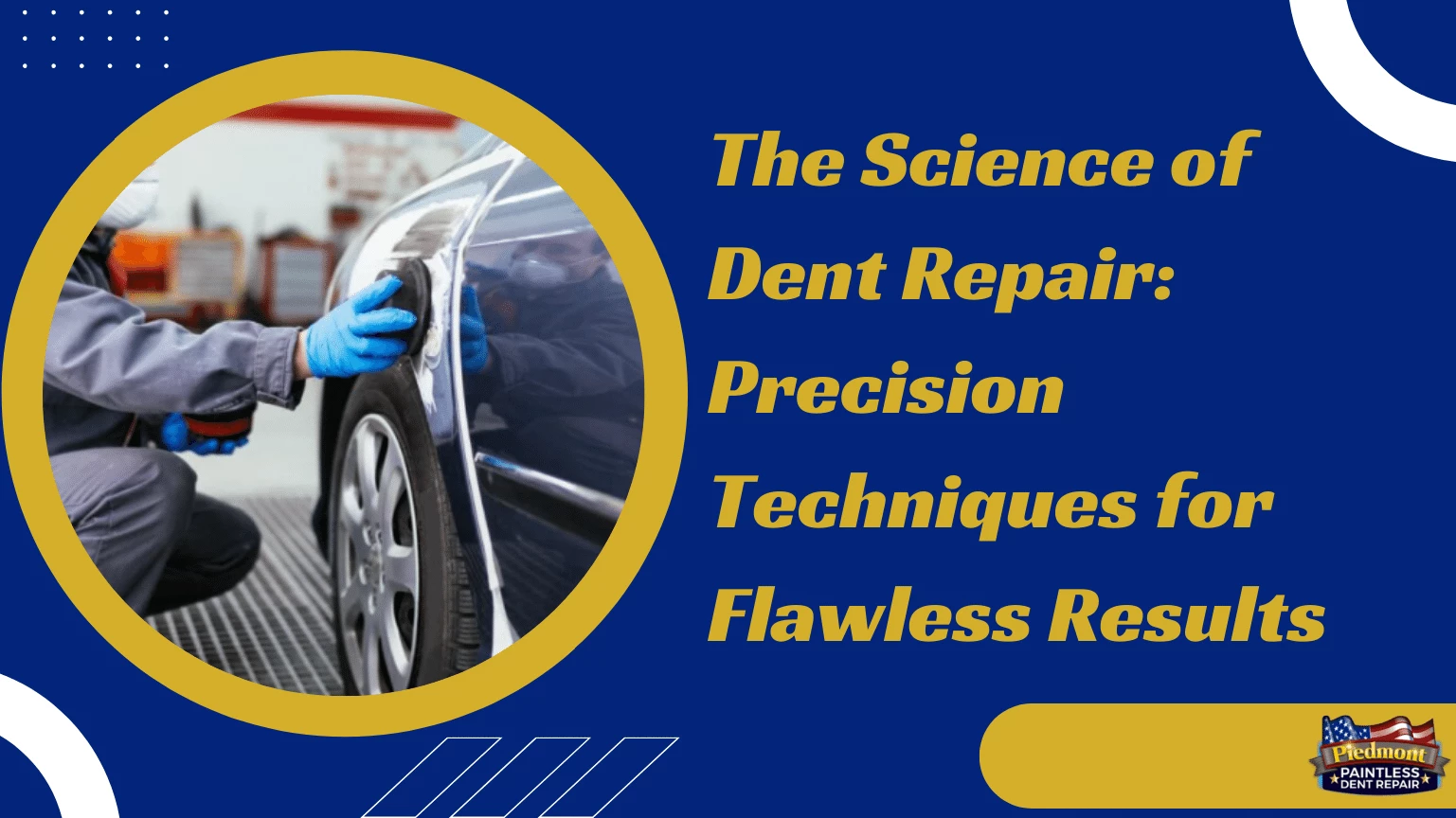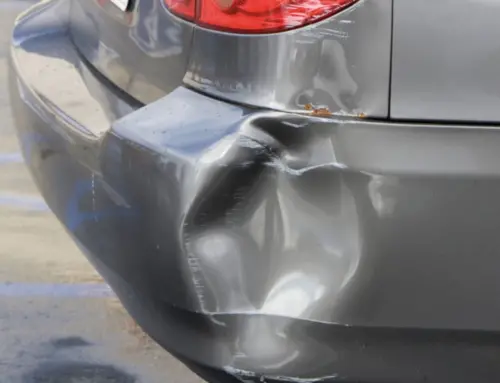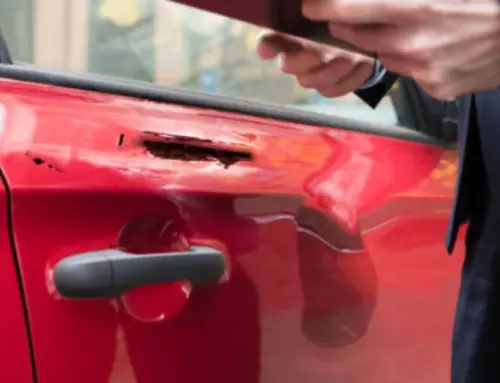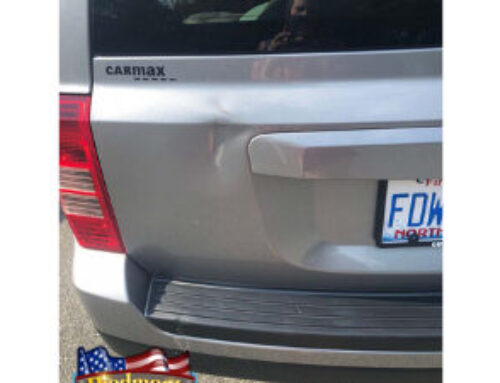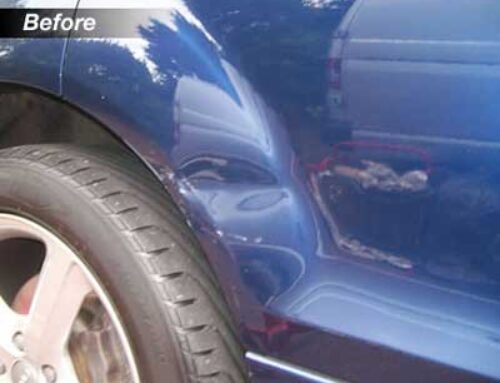Have you ever found yourself staring at a dent on your car and wondering how it got there? Whether it’s from a runaway shopping cart or an inexperienced driver in the parking lot, dents can be frustrating to deal with. Not only do they affect the appearance of your vehicle, but they can also decrease its value.
Many people may think that fixing dents is just a matter of pounding them out or using some DIY tutorials online, but there is actually a well-crafted science behind dent repair.
What scientific principles and technologies are involved in the precision techniques of dent repair?
Various scientific ideas and technologies are used to obtain exact and effective outcomes in car dent repair. Among them:
- Materials Science: Metal panel manipulation during dent repair requires knowledge of vehicle construction materials. Technicians use the right equipment and methods to repair dents without damaging the structure by understanding metal properties, including elasticity, flexibility, and hardness.
- Physics of Force and Pressure: Dent repair methods use force and pressure to bend metal surfaces without further damage. Paintless dent restoration (PDR) uses specialized tools to massage and twist metal progressively, spreading tensions and returning the panel to its natural shape.
- Thermal expansion and contraction: Dent repair uses heating and cooling to utilize thermal expansion and contraction. Using a heat gun or other heat source expands the metal panel, making it easier to shape. Cooling the metal with compressed air or liquid nitrogen contracts it, allowing finer changes.
- Technology-Assisted Dent Repair: Precision dent repair tools and equipment have been developed thanks to technology. Specialized lighting systems and reflectors let personnel analyze damage, while computerized measuring systems and 3D imaging technologies provide accurate measurements and visuals for repair planning and implementation.
- Adhesive and Bonding Technologies: When typical dent repair methods fail, these technologies pull and deform metal. Technicians use specialized adhesives and pulling methods to gently draw the damage back into shape without damaging the paint or structure.
- Automated and Robotic Dent Repair Systems: Some modern repair facilities use automated and robotic dent repair methods, especially for large-scale manufacturing or fleet operations. These devices assess and fix dents precisely and efficiently using computer-controlled actuators and sensors.
Precision dent repair uses scientific principles, specialized tools, and technological breakthroughs to minimize car damage and deliver accurate and effective results. Advances in materials science, engineering, and technology improve dent mending methods.
How do these precision techniques differ from traditional methods of dent repair?
Traditional dent repair procedures like body fillers and repainting require more physical labor and are more invasive. The technician must sand down the damaged area, fill it, and repaint it, which may not match the car’s outside color and quality. These methods can affect the vehicle’s structural integrity and take longer, which is essential for owners who frequently leave their cars in the shop.
However, precision dent repair methods aim to preserve the original paint and material. Paintless Dent Repair (PDR) uses specialized tools to carefully remove dents from the underside of the panel without fillers or repainting.
The original finish is preserved, and this method is more ecologically friendly and labor-efficient. Specialized lighting, adhesives, and automated systems improve repair efficiency and accuracy with minimal vehicle damage.
Are there specific tools and equipment used in the science of dent repair that contribute to flawless results?
Yes, the science of dent repair relies on specific tools and equipment that contribute to flawless results. Some essential tools and equipment used in dent repair include:
- Mallets: Mallets are very effective tools for reshaping metal panels in repair shops.
- Shrinking Hammer: This tool is used in dent repair to shrink and shape metal panels, contributing to the flawless restoration of the vehicle’s body.
- Rods, Picks, and Whale Tails: These are standard tools used in paintless dent removal (PDR) and have different shapes and curves to match specific dent patterns, contributing to precise and seamless dent repair.
- Dollies: Dollies are used in paintless dent repair to provide backing and support while reshaping the metal panels, ensuring a smooth and flawless finish.
- Glue Puller Kit: This kit is used for repairing dents on metal surfaces without damaging the paint, contributing to the flawless removal of dents.
- T Hot Box and Light: These are products used for fixing paintless dents, contributing to effective dent removal and flawless results.
These tools and equipment play a crucial role in achieving flawless results in dent repair, whether through traditional methods or modern paintless dent removal techniques.
Can these techniques be applied to various types of dents and vehicle materials, or are there limitations?
The dent repair techniques and tools mentioned can be applied to various types of dents and vehicle materials, but there are some limitations to consider:
- Metal Panels: The techniques mentioned, such as using mallets, shrinking hammers, rods, picks, and dollies, are most effective on metal panels commonly found in traditional vehicles.
- Paintless Dent Repair (PDR): PDR techniques, including the glue puller kit, T Hot Box, and light, are designed explicitly for repairing minor dents on metal surfaces without affecting the paint. However, they may have limitations regarding deep or extensive damage.
- Aluminum and Composite Materials: For vehicles with aluminum or composite materials, specialized dent repair techniques and tools may be required due to these materials’ different properties and characteristics.
- The extent of Damage: The applicability of these techniques also depends on the extent and severity of the dent. While they suit minor to moderate dents, more extensive damage may require alternative repair methods.
- Specialized Tools: Some advanced techniques like PDR may require specialized training and tools, making them less accessible for general repair shops without specific expertise.
Ultimately, while these techniques and tools are versatile and widely applicable, the type of dent, the material of the vehicle, and the severity of the damage all play a role in determining the most suitable approach for achieving flawless results in dent repair.
What are the advantages of choosing precision dent repair techniques in terms of cost, time, and overall quality of results?
Precision dent repair offers cost, time, and quality advantages:
- Cost-Effectiveness: Precision dent repair procedures like paintless dent repair (PDR) are cheaper than sanding, filling, and repainting. PDR requires no paint or fillers; thus, vehicle owners save on material and labor expenditures.
- Time Efficiency: Precision dent repair takes much less time than standard approaches. Due to the lack of drying time and various painting and curing steps, paintless dent restoration can be completed in hours rather than days.
- Minimal Vehicle Downtime: Precision dent repair methods are faster and less laborious than traditional methods, minimizing vehicle downtime and interruption to the car owner’s daily schedule. This benefits people who drive to work, school, or other appointments.
- Preservation of Original Paint Finish: Precision dent repair methods like paintless dent repair preserve the vehicle’s original paint finish without repainting or color matching. This keeps the vehicle’s market value and ensures a factory-like finish after repairs.
- Versatility and Adaptability: Precision dent repair can fix minor hail, parking lot, dings, dents, and creases. Technicians can effectively repair a variety of damage using these methods.
- Environmentally Friendly: Paintless dent repair is more environmentally friendly than traditional treatments that employ paint, solvents, and other chemicals. These methods encourage sustainability and environmental responsibility by reducing waste and dangerous pollutants.
Precision dent repair methods are cost-effective, time-efficient, and high-quality. Technicians use advanced tools, procedures, and materials to do precise repairs while minimizing vehicle owners’ expenditures, downtime, and environmental impact.
Explore the Art of Flawless Dent Repair
At Piedmont Dent Repair, we see dent repair as an art form that restores vehicles to their pristine condition. Our expert technicians employ meticulous paintless dent repair techniques to remove dents while seamlessly preserving your car’s original finish. We take pride in our precision and attention to detail, ensuring that each vehicle receives the personalized care it deserves.
Through a combination of skill, specialized tools, and dedication, we provide superior results that meet and exceed your expectations. Trust your vehicle with us and experience the transformation – a flawless finish without a trace of damage. Contact us for more information!

